Another Timbre TimHarrisonbre
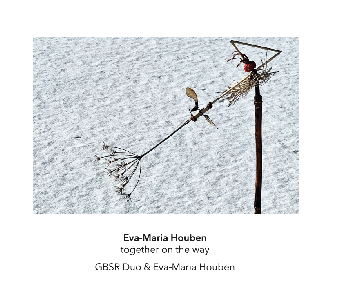
at187 Eva-Maria Houben ‘together on the way’
Eva-Maria Houben & GBSR Duo ‘together on the way’ (2020) 67:05
Eva-Maria Houben (pipe organ)
Siwan Rhys (piano)
George Barton (percussion)
Recorded live at the Huddersfield Contemporary Music Festival, November 2021
Interview with Eva-Maria Houben
How did 'together on the way' come about, and had you worked with George and Siwan before?
'together on the way' was commissioned by the Huddersfield Contemporary Music Festival, and I composed it especially for this festival. I already knew Siwan Rhys. We had met each other for the first time on the occasion of the world premiere of my piece ‘a peaceful silent place’ for organ and piano. This performance took place on 8th December 2019, at the University of Westminster in London as part of the London Contemporary Music Festival. Siwan and I came together mysteriously during our rehearsal: we never had seen each other before, so at first we planned to have several hours rehearsing. But as soon as we began to play we knew: our practice was coming into being on its own, and there was no need to worry about needing a lot of time for rehearsal. This was a wonderful experience, I think for both of us. As Siwan is George Barton’s duo partner in the GBRS Duo it was our aim to perform all together. And I am entirely happy with our performances in Huddersfield – there were many! Each performance had a value in itself. The last performance (with an audience) was only one element in a chain. I hope to continue our common practice in the future – with or without an audience.
Is the piece through-composed, or is it a loose structure which the three of you have to interpret?
I do not use the terms “through-composed” and/or “loose structure”, I could not even define them. They are not part of my thinking about music. I know that several musicologists work with these terms, but these terms correspond to a view of music that concentrates on the score. My focus is the musical practice. Everyone may have a look at my book ‘Musical Practice as a Form of Life’ (transcript, Bielefeld). And look at my scores on wandelweiser: each score reflects its own notation. The single notation in each case corresponds to the performers’ special situation, to their relationships, their activities – to the special musical practice. For me the composer is not the last authority in a process of discussion and rehearsal.
The terms “through-composed” and “loose structure” denote a dual system that does not refer to the musicians’ musical practice. They highlight extremes on a scale, invented by musicology to gain terminological classification while thinking about music. The score is not the music. With this in mind I can easily say: No music is “through-composed”, no music has a “loose structure”. This is the reason why I ban these terms from my thinking about music.
Can you describe how you worked with Siwan and George on 'together on the way'?
Fortunately we had two whole days for our rehearsals. That was fine, we could really live together. We did not always talk about music, we also just spent time together. And we became a real trio simply being there and living together. Our rehearsal time was a kind of “holiday season”, each one of us working very attentively and intently, at the same time leisurely and calmly. We had a lot of longer periods of playing together – listening to each other, trying to find out the path the composition would lead us. Then, after a period of playing, we discussed our impressions. At the end of the first day we played for a long time. The following rehearsal time during the next day was rich in former experiences. I felt that we could continue playing the piece, repeating our ‘making music’ with the help of the piece again and again, like doing a ritual. And, speaking for myself: I became more and more familiar with George Barton and Siwan Rhys as friends. Making music together had done this, had this overwhelming energy for me. For me it’s a great gift that I could experience this.
You have composed a lot for the organ. Can you tell us about your relation with the instrument? When did you start playing it, and do you feel a particular affinity with it?
Yes, I have composed a lot for the organ, although fewer compositions than for the piano. My first piano lessons began when I was 5 years old. At the age of 10 I discovered my unbroken love of the organ, and during the following years I had organ and piano lessons alternately. I had my first job as an organist aged 12 – at a small old organ (builder: Weidtmann, Ratingen) in a very small church. Then during my studies at the music conservatory in Essen (Folkwang) I made the organ my first instrument.
In the following years I discovered “her” more and more, and I use a personal pronoun to announce my very individual connection to each particular instrument. Before a recital I love to discover the space, the organ “herself”, asking: What is your character? How can we come together? I think in personal terms about different organs, one very small organ (1734!) with meantone temperament is “sweet” for me: You can listen how hard she works and breathes during the performance, you can hear the wires and strings from key to pipe!! And I love the organ’s breath. In recent years I have found a lot of ways of working with the organ’s breath, to include it into my scores. And before I perform a concert on the organ I'd never say that I am playing, I always think and say: “We” (two) are now playing.
The organ is for me a “Hoffmannesque instrument”, by which I’m referring to the ideas of the great Romantic philosopher, writer and musician E. T. A. Hoffmann. I could imagine during a kind of somnambular walk watching Hoffmann sitting in the organ gallery amid a heap of wires, pieces of wood, fragments of pipes, and so on…. What becomes important is the organ as a machine, as an extension of human bodies. “She” can do what we cannot do, “she” has an endless breath, “she” reigns over a universe of partials and tone relations…. Imagine the doll in the opera “The Tales of Hoffmann”, singing beautifully, but – as a machine – being exhausted after some time. And the doll-maker has to wind the doll up again (crack, crack, crack…), and the singing begins again with a great glissando upwards. Everybody knows that she is a machine, but we forget this in the moment of elevation. In the moment when music passes the threshold of our everyday life into wonder, into the magical world, into heaven on earth. Look at Kleist’s marionette, his puppet dancing with an overwhelming grace. No human being can achieve this – and, importantly, she does it without being conscious of what she is achieving; it simply exists!
Today some musicologists regard the artists of the Romantic era as political boneheads who lived private lives, not caring about anything in the world. I disagree strongly. The Romantic era opened our ears and eyes to the miraculous, fantastical world within our everyday life. The Romantic composers and writers gave us a sense of how important this is: the capacity to feel awe and wonder. And for me this is a political act. It’s not boneheaded at all; on the contrary, it opens our senses, makes us alive and attentive to our surroundings.
And the organ helps in this. “She” supports us with new possibilities, provides us ways of extending our senses and bodies. She makes our ears become antennae!
That’s great. Were there any peculiarities about the organ at St Paul's Hall?
The organ at St Paul’s Hall cannot blow sounds with a certain amount of noise or wind if you try to achieve this by pulling variable stops. The stops are “off” or “on”, there is no degree between these two possibilities. But you can achieve a sound “between” wind and clearly pitched sound by variable key pressure. But you can only do this for single sounds, not for a chord. Usually you need both hands for one single sound. So we had to take some weights, but we could also use small wedges of gum, which Siwan also uses sometimes for certain piano sounds. With the help of these wedges I could fix some keys simultaneously and achieve a very fragile, restraint, and vibrating sound, even as a chord. The organ in St Paul’s Hall has wonderful colors; you can explore a richness in possibilities to combine several colors. I enjoyed the organ very much. “She” responded very quickly to my questions, “she” tried at once to comply with my efforts. A flexible, smooth individual: “she” provided us with a lot of amazing ideas for the rehearsal and for the performance with an audience.
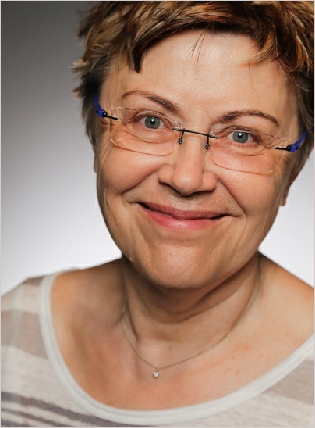
Eva-Maria Houben
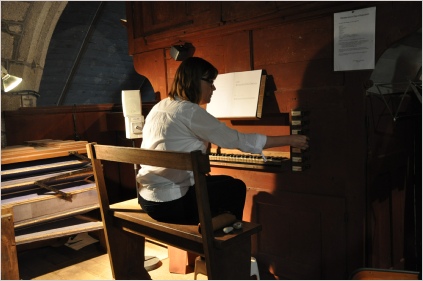
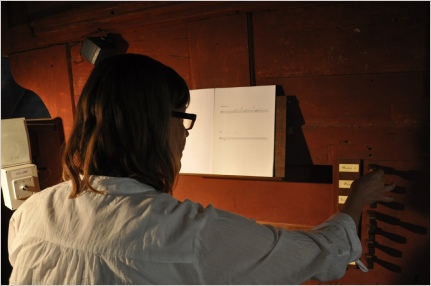
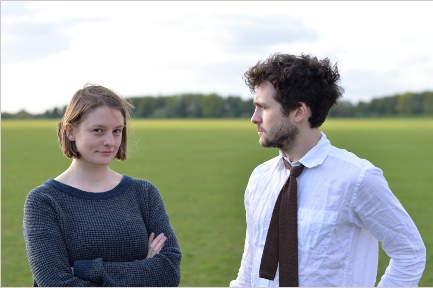
GBSR Duo